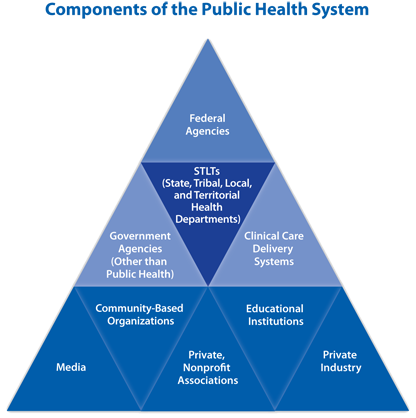

As depicted in the pyramid, United States’ governmental public health system represents a complex and broad range of federal, state, and local health agencies, laboratories and hospitals, as well as nongovernmental public and private agencies, voluntary organizations, and individuals. Federal agencies are represented at the top and health departments at the center of the pyramid because of their primary leadership responsibilities for developing a broad knowledge base so that policy is driven by long-range issues, ensuring that the public interest is served, and achieving a balance between individual liberties and equitable actions for the good of the community. The pyramid represents components of the public health system that are likely to receive capacity building assistance through the “Building Capacity of the Public Health System to Improve Population Health through National, Nonprofit Organizations” grant.
(K. Chapman, G. Weaver, S. Taveras—CDC, 2013)
1Institute of Medicine. The future of public health. Washington: National Academies Press; 1988.